5 tips to help manage food cravings with a non-diet approach. Do you find yourself craving food all day long? Do you struggle with late night cravings? Here are some tips that may help!

Food cravings can make you feel like you have no control over food. I know, I’ve been there. I once thought that I needed to stop eating added sugar to manage my cravings. And I did so for years.
The truth is, restrictions won’t help.
Instead, the tips below use a non-diet or intuitive eating approach and I hope you’ll find them helpful.
Note: These tips are general recommendations and are not indented to replace individualized nutrition or medical advice.
That being said, here are some tips to help you manage your food cravings!
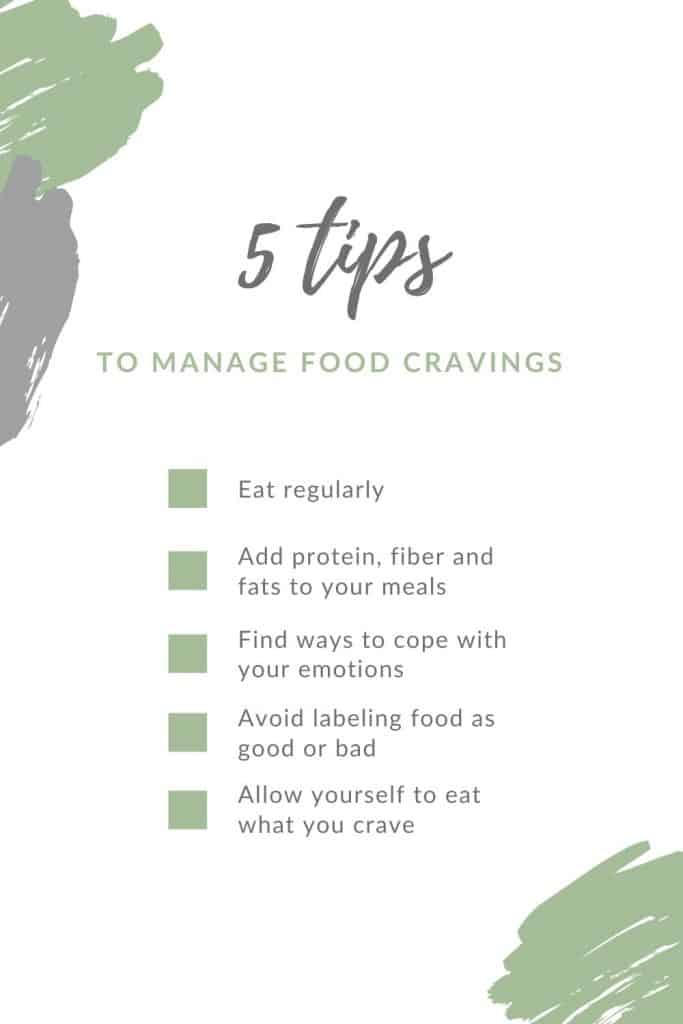
Tips to Manage Food Cravings
1. Eat Regularly
Make sure you’re eating regularly throughout the day. Skipping meals or waiting until you’re famished will intensify cravings and make it difficult not to overeat. This is completely normal, whatever your intentions are! Your body is made to protect you from starvation. It doesn’t know the difference between self-imposed restrictions (from dieting or skipping meals) and real food scarcity.
It’s important to eat when you’re hungry, even if you just ate and even if you didn’t exercise that day. Your body needs food to function properly and respecting your hunger will help manage cravings.
If you don’t feel your hunger signals, a general rule of thumb would be to eat every 4-5 hours.
2. Add Fiber, Protein and Fats to Your Meals
If you feel like you’re constantly hungry, your meals may not be big or satisfying enough. Meals shouldn’t be prepared to contain the lowest amount of calories possible. Instead, make your meals filling with fiber, protein and fats.
Try adding protein and fats at every meal and choose high-fiber carbs when you can. For example, slices of whole wheat toasts with peanut butter would likely fill you longer than a small bowl of low-calorie cereal. It’s okay to eat the cereal, but know that you may be hungry sooner.
This is not to say that you should always eat these kinds of filling and nourishing meals. It’s okay to have low-fiber, carb-based meals. Don’t feel guilty for enjoying these. Just know that you may feel hungry more often. Your body is telling you what it needs and it’s important to respect it.
3. Find Ways to Cope with Your Emotions
Emotional eating is completely normal. Food is much more than just fuel. It’s connection, pleasure, comfort and more. If you find yourself turning to your favorite foods when you’re stressed, sad, lonely or bored, you’re not alone.
If you’re physically hungry, then by all means, eat! And if you’re not hungry and eat for comfort, be compassionate with yourself. This is completely normal.
That being said, try to find other activities that bring you comfort and happiness. Activities that you can turn to in difficult times. Write a list if it help. This will be different for everyone, but it could be a walk in nature, taking a bath, talking to a loved one or cuddling with your pet. These activities are not meant to be used as a distraction from cravings or as a way to eat less. Engage in these comforting activities when they feel helpful to you, but make sure to eat when you’re hungry, allow yourself to eat the food that you love and be mindful of how you feel.
Eating to cope with your emotions can happen on a spectrum. Eating for pleasure or comfort are mild forms of emotional eating and are experienced by many. However, if you find yourself eating for sedation or punishment (without getting pleasure from food), support can be important.
4. Avoid Labeling Food as Good or Bad
Labeling food as good or bad will cause guilt whenever you inevitably eat something that’s on your “bad” list.
There’s no one food that has the power to make you small or heavy. Just like no one food has the power to make you healthy or unhealthy.
Yes, there are foods that are more nutritious than others, but they all fit. Food can’t be morally bad or good.
Enjoy all foods, which brings us to the last tip…
5. Allow Yourself to Eat What You Crave
Eating sugar does not make us crave sugar like we may think. Restricting sugar makes us crave sugar. Restrictions tend to make us obsess over food and intensifies cravings.
For example: Have you ever craved chocolate in the afternoon and told yourself you couldn’t have it? The craving then intensifies until the evening comes and you find yourself “caving” and eating more than you would have eaten in the afternoon? Try eating what you crave and move on. See the difference.
Allowing ourselves to regularly eat the foods that we crave will take them off the pedestal. It’s a process called habituation. The more you eat a certain food, the less special it becomes. For this reason, eating the food that you crave regularly will reduce the obsession and cravings for that food.
“But what if I start eating chocolate all day long?”. You’ll get sick of it. Yes, you might eat more of the foods you were restricting at first, but with time, they won’t be as special. You’ll probably still enjoy those foods, but you won’t think about them all day.
Remember, it’s not about eating whatever you want, whenever you want and in whatever amount you want. It’s important to respect your hunger and fullness and to eat in a way that makes you feel good. If you overeat, be compassionate with yourself and seek support if needed.
Looking for Support?
Intuitive eating is a process and you don’t need to do it alone. Support is important. Try finding a dietitian with experience on intuitive eating in your area. If you’re in Canada, you can book a virtual appointment with me here.
If you’re interested in learning more about intuitive eating, make sure to read the Intuitive Eating Book by Evelyn Tribole and Elyse Resch, which inspired these tips.


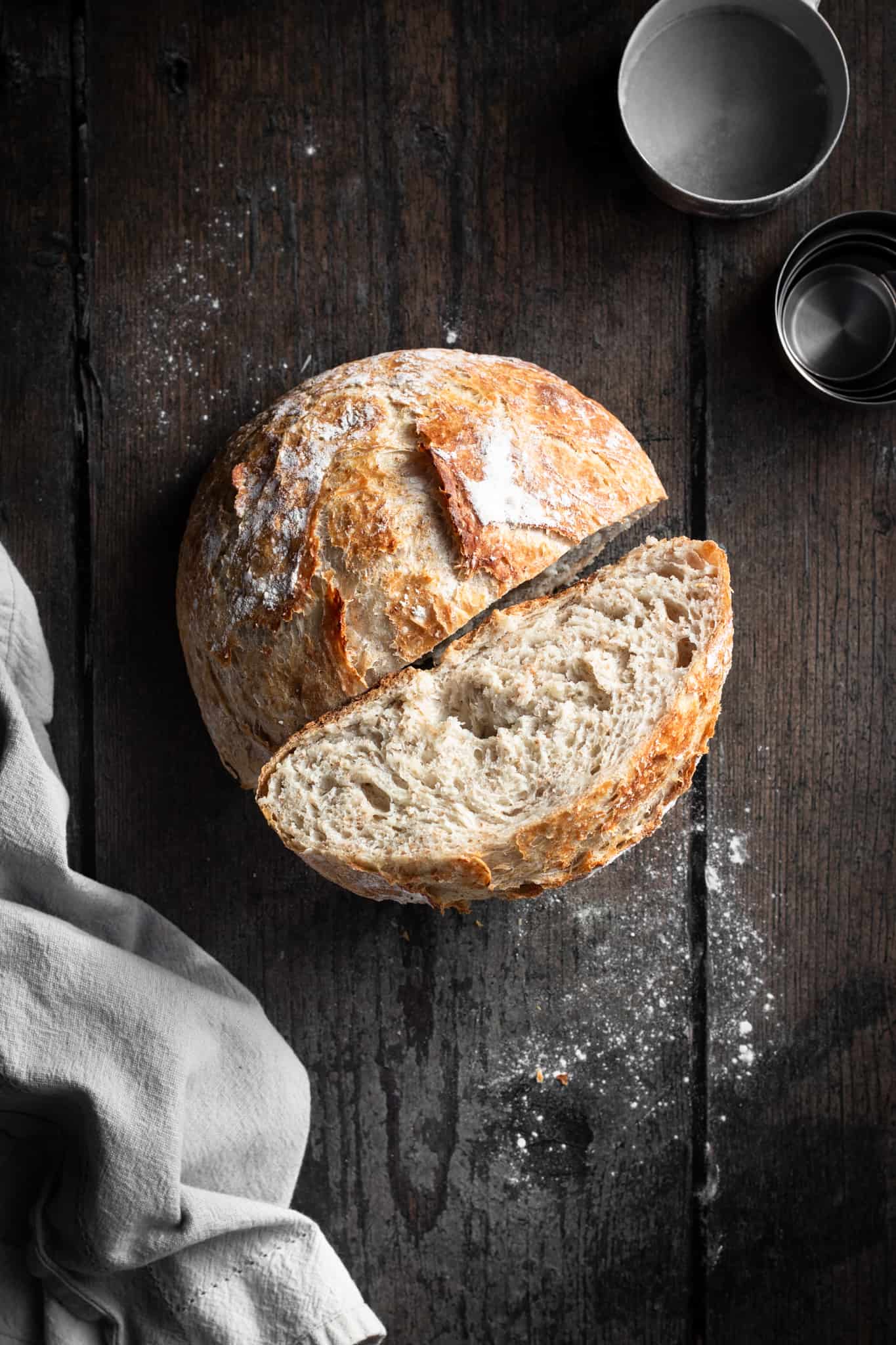


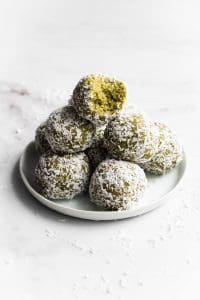


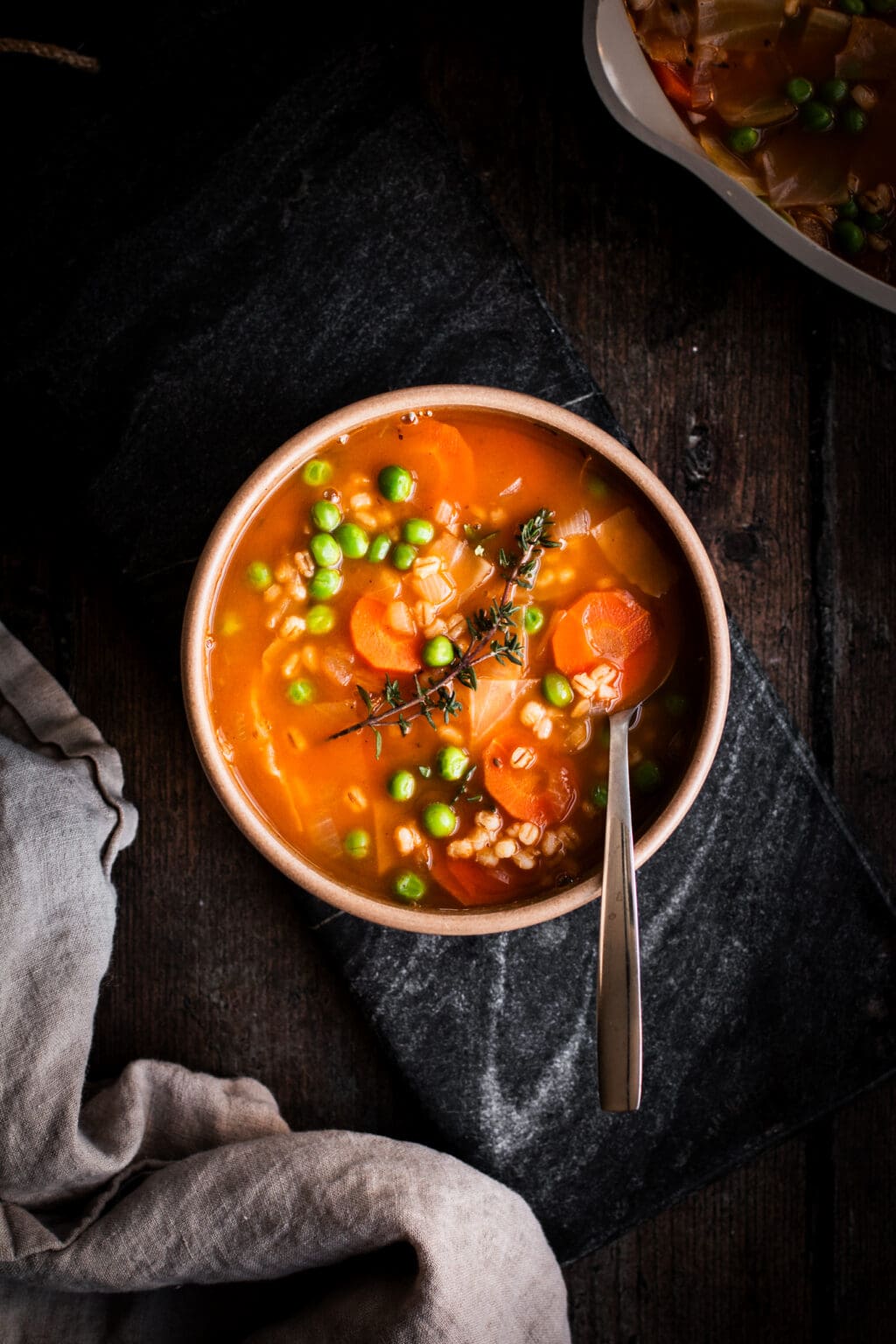
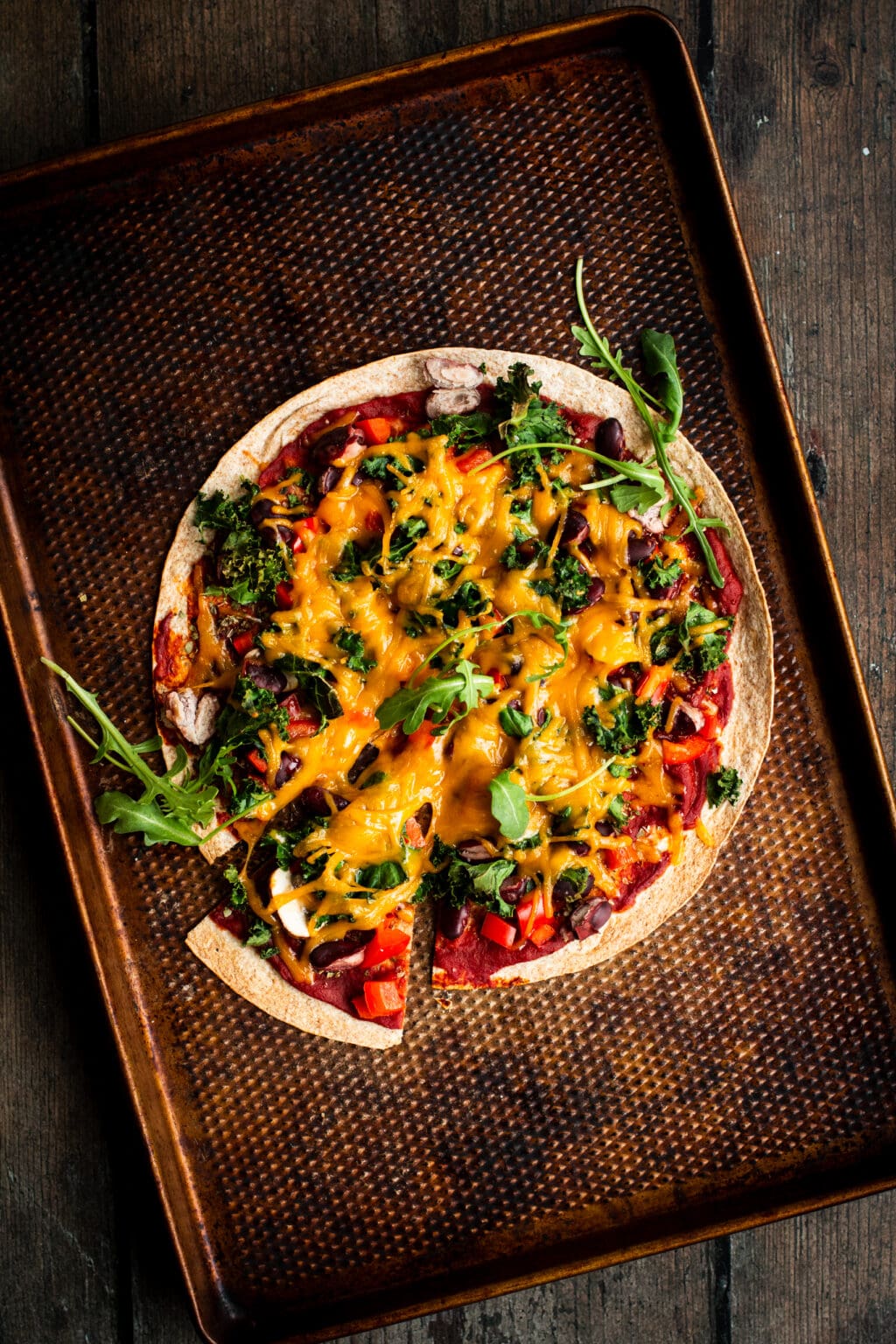

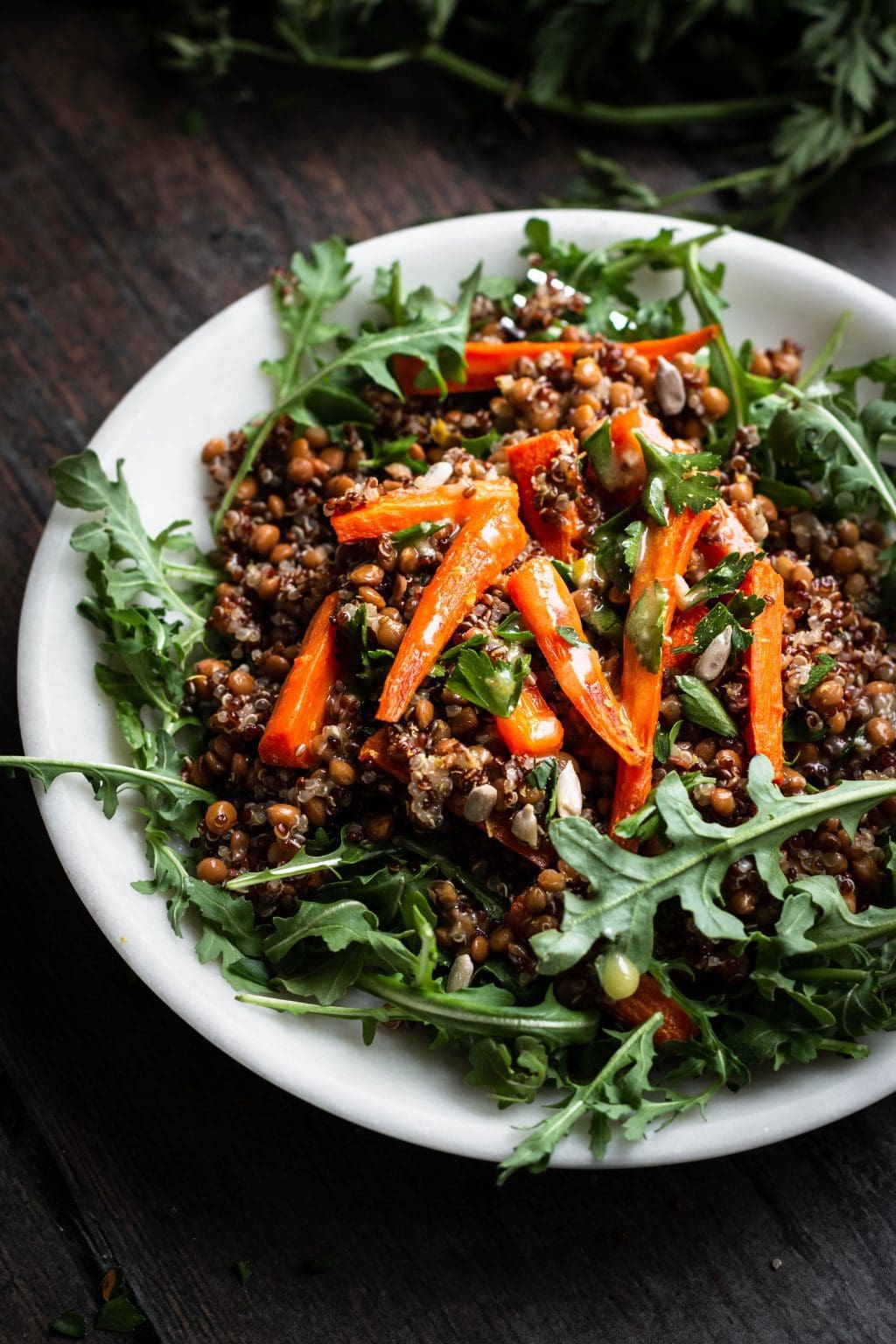
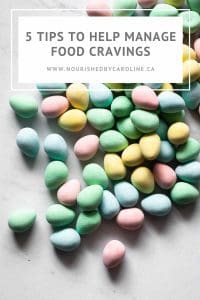
Leave a Reply